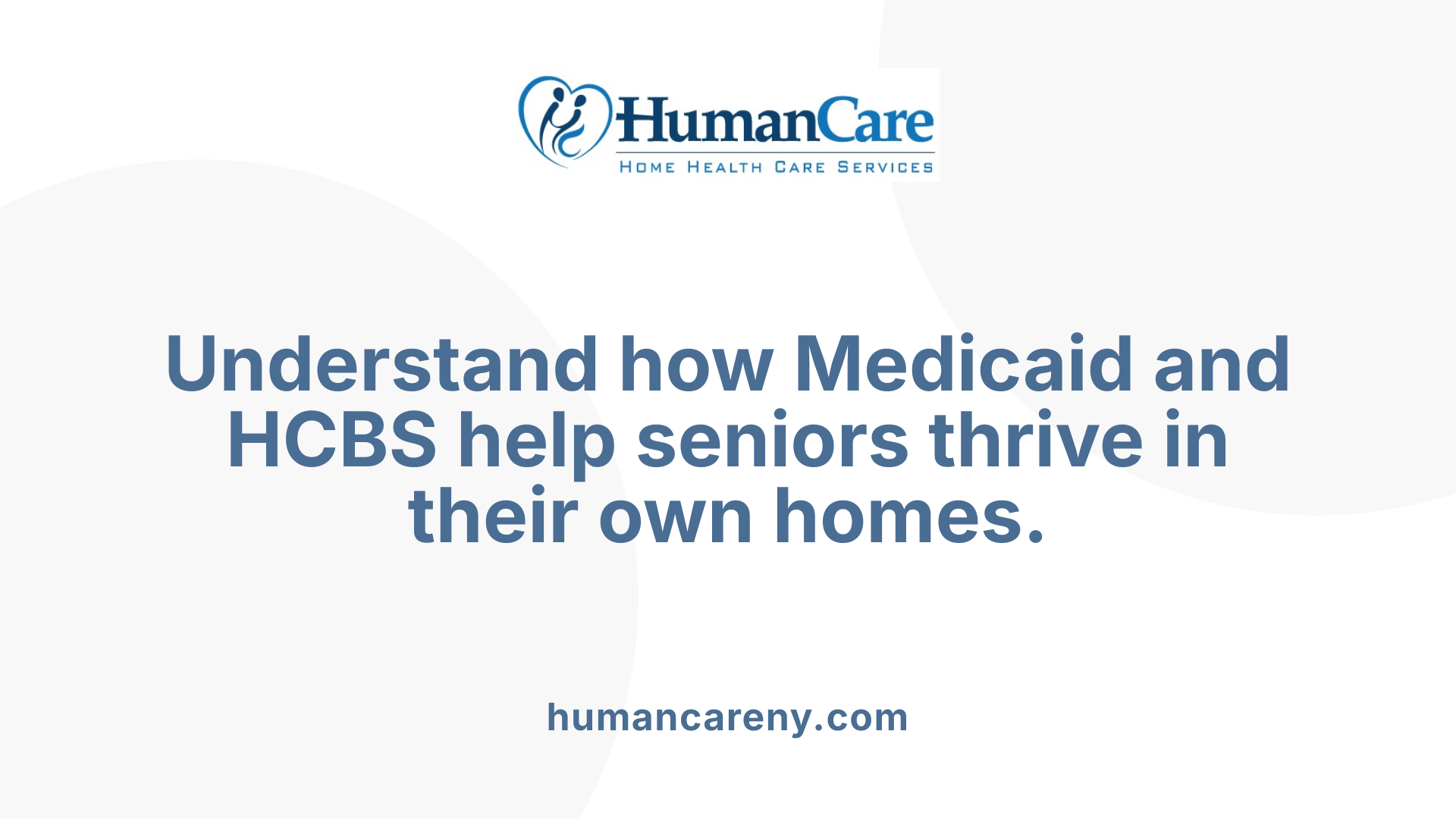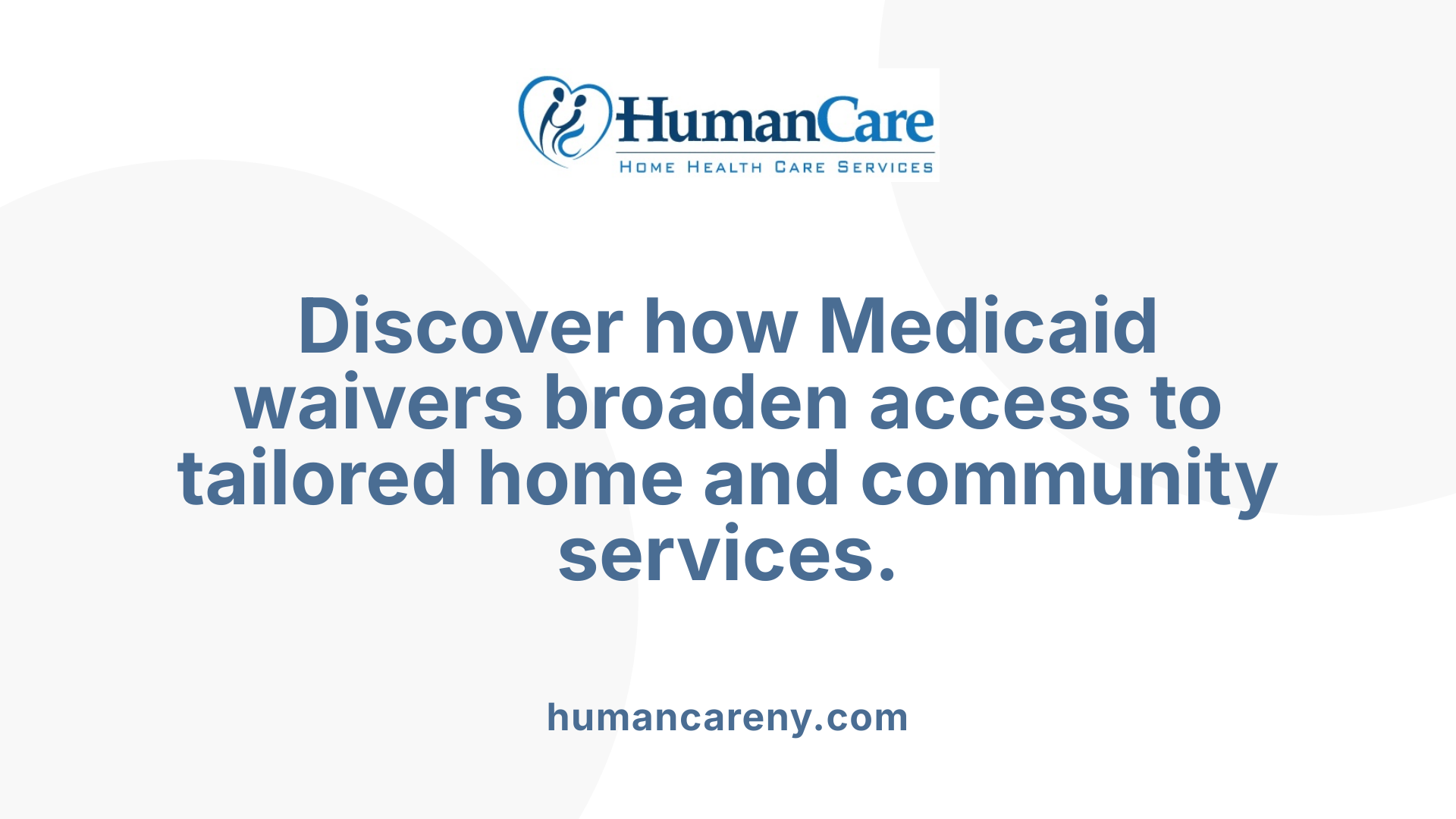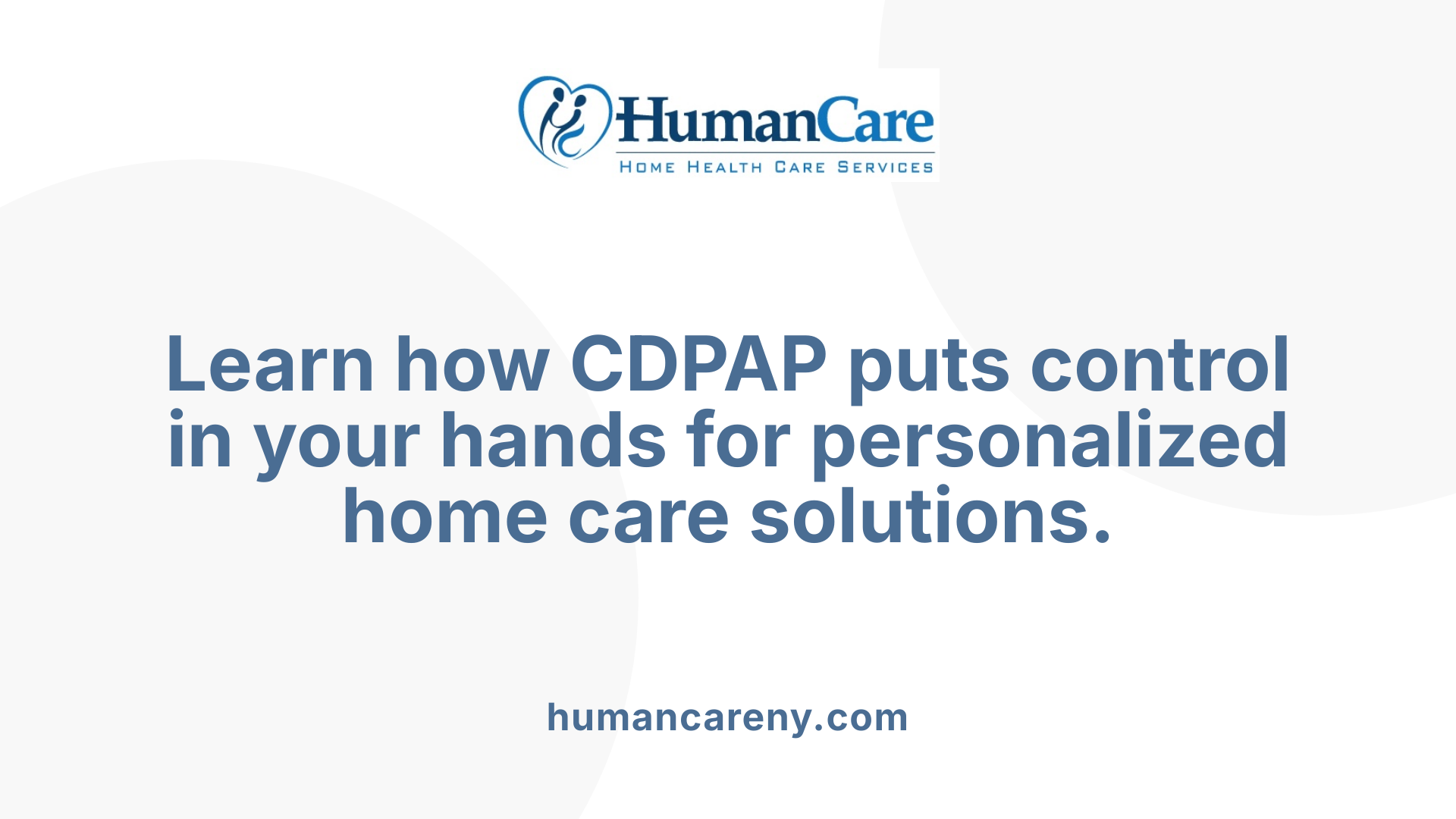Understanding Long-Term Care Needs and Medicaid Waivers
As the population ages and the need for supportive services grows, Medicaid waiver programs have become essential tools for those planning long-term care. These programs help seniors and individuals with disabilities receive care in the comfort of their own homes or community settings, providing crucial alternatives to institutionalization. This article explores the landscape of Medicaid waiver programs and their role in long-term care planning, particularly focusing on in-home care services and the structure of waivers in states like Arizona and New York.
The Role of Medicaid and HCBS in Supporting Aging at Home

What are Home and Community-Based Services (HCBS) and what services do they include?
Home and Community-Based Services (HCBS) are designed to support seniors and individuals with disabilities by helping them with daily activities. The primary goal of HCBS is to enable these individuals to stay in their own homes or with family, rather than moving to institutional care.
Services covered by HCBS include:
- Adult day care and adult day health care
- Home-delivered meals
- Home health aides
- Housekeeping and personal care
- Respite care to support caregivers
- Transportation services
- Visiting nurse visits
This range of services helps individuals maintain independence and enjoy better quality of life at home.
Who is eligible for HCBS?
Eligibility for HCBS is based on age, disability, and functional needs. Individuals must be either 60 years or older, or between 18 and 60 with a disability. Additionally, they need to be functionally impaired, meaning they require assistance with basic activities of daily living such as eating, bathing, dressing, grooming, using the bathroom, or mobility.
How does HCBS prevent institutionalization and support long-term care planning?
By providing comprehensive in-home support, HCBS helps individuals avoid or delay admission to nursing homes or other long-term care facilities. This approach ties directly into long-term care planning by offering lower-cost, personalized care options that promote autonomy.
Coordination through state and local agencies ensures that services meet each individual's needs and that care plans are managed effectively. These efforts not only improve quality of life but also reduce Medicaid expenditures on institutional care.
Medicaid Waiver Programs: Expanding Access to Customized Care

How do Medicaid waiver programs fund home and community-based services?
Medicaid funds home and community-based services (HCBS) through both state plans and Medicaid waivers. These waivers enable states to offer services as lower-cost alternatives to institutional long-term care, allowing individuals to receive care in their own homes or communities. This approach supports independence and personalized care tailored to each person's needs.
Which Medicaid waivers typically fund respite care services for caregivers?
Respite care, which provides temporary relief for caregivers, is commonly funded by several specific Medicaid waivers. These include:
- The 1115 Research and Demonstration waiver,
- The 1915(b) Managed Care waiver,
- The 1915(c) Home and Community-Based Services waiver.
Together, these waivers ensure that caregivers can access support and breaks while their loved ones continue to receive essential care.
How are Arizona’s Medicaid waivers structured for long-term care?
Arizona incorporates all 1915(c) Home and Community-Based waivers into its broader 1115 Demonstration, managed under the Arizona Health Care Cost Containment System (AHCCCS). This integration allows for streamlined care and funding. Respite care services are delivered through the Managed Long-Term Services and Supports (MLTSS) system, which is supported by these Medicaid waivers. This structure strengthens coordination and access to customized care for eligible seniors and individuals with disabilities.
| Medicaid Waiver Type | Purpose | Key Features |
|---|---|---|
| 1115 Research & Demonstration | Broad waiver allowing state innovation | Covers a range of services, including respite care, as part of demonstration projects |
| 1915(b) Managed Care | Provides managed care delivery | Supports coordination of care and respite services for eligible beneficiaries |
| 1915(c) HCBS | Provides home and community services | Targets individuals requiring nursing facility level of care to receive services at home, including respite care |
This waiver combination in Arizona exemplifies how Medicaid programs adapt to support long-term care preferences and needs effectively.
Key Long-Term Care Programs in Arizona: A Focus on Medicaid Supports

What are the main long-term care Medicaid programs in Arizona?
Arizona offers three primary long-term care Medicaid programs to assist seniors and individuals with disabilities: Nursing Home Medicaid, Arizona Long Term Care System (ALTCS), and ABD Medicaid. Each program targets different needs and care preferences while helping recipients obtain necessary long-term services.
How does ALTCS support seniors who want to remain in the community?
ALTCS is designed for seniors who require a Nursing Facility Level of Care but prefer to live in their own homes or community settings instead of institutional care. It offers a range of services including adult day care, home modifications to enhance accessibility, medical equipment, and personal care services. These benefits are delivered through managed care organizations, ensuring coordinated and community-based support tailored to individual needs.
What are the eligibility and financial criteria for these programs?
Applicants must demonstrate functional eligibility, typically requiring full-time care due to significant impairments. Financial requirements vary by program:
Nursing Home Medicaid: Targets seniors with limited income, providing coverage for nursing home care. While most income is directed to the state for care costs, recipients retain a personal needs allowance of $145.05 per month.
ABD Medicaid: Caters to seniors aged 65 and above, those who are blind, or disabled, with an income limit of $1,255 per month for individuals but no asset limit.
Home ownership is often excluded from asset calculations if certain conditions apply, such as having an equity interest below $730,000 or residing with a spouse or dependent. This helps protect individuals’ homes while qualifying for Medicaid benefits.
Services offered under ALTCS to support community living
tlcs services emphasize maintaining independence, including:
- Adult day care programs promoting social engagement and supervision.
- Home modifications to improve safety and ease of movement.
- Provision of necessary medical equipment.
- Personal care assistance with daily activities.
By combining these services, ALTCS supports aging and disabled individuals in avoiding institutionalization, aligning closely with preferences for home and community-based care.
| Program Name | Target Group | Key Features and Benefits |
|---|---|---|
| Nursing Home Medicaid | Seniors needing nursing facility care | Income limits apply; personal needs allowance retained; institutional care covered |
| ALTCS | Seniors needing nursing level care preferring community living | Includes adult day care, home modifications, medical equipment, personal care; delivered via managed care |
| ABD Medicaid | Seniors 65+, blind or disabled | Income limit of $1,255/month; no asset limits; covers some long-term supports |
This overview illustrates Arizona's comprehensive Medicaid supports designed to meet diverse long-term care needs, particularly emphasizing community-based options through ALTCS.
Consumer Directed Personal Assistance Program (CDPAP): Empowering Choice in Care

What is CDPAP and who does it serve?
CDPAP is a Medicaid program available in New York State designed to empower chronically ill or physically disabled individuals by allowing them to choose and hire their own personal caregivers. This can include friends or family members, except for spouses, legal representatives, or parents of minors. The program supports those needing help with daily activities or skilled nursing services in their homes, promoting independence and personalized care.
Who is eligible for CDPAP?
To qualify for CDPAP, individuals must be Medicaid-eligible and have a stable medical condition that requires home care services. Additionally, they must be capable of self-directing their own care or have a designated representative to manage the process on their behalf. This ensures that recipients can fully benefit from the program's flexibility and tailored support.
What responsibilities do recipients or representatives have under CDPAP?
Recipients or their appointed representatives carry the responsibility of managing their caregivers. This includes recruiting, hiring, training, supervising, and terminating personal assistants. They also arrange for backup coverage when necessary, coordinate services, and maintain payroll records. This hands-on management ensures that care preferences are met closely, reflecting the individual's unique needs.
What is the role of the Fiscal Intermediary in CDPAP?
Public Partnership LLC (PPL) acts as the mandated Fiscal Intermediary for CDPAP in New York. PPL manages payroll and employment records for the caregivers hired through the program. This arrangement simplifies administrative tasks for recipients and ensures timely and accurate compensation for personal assistants.
Planning and Navigating the Application Process for Medicaid Waivers and Long-Term Care

How do applicants apply for Medicaid waiver programs?
Applicants need to first determine if they meet the eligibility criteria, which include income limits, age or disability status, and functional care needs. The application involves gathering important documentation such as financial statements, proof of income, and medical evaluations. Once ready, individuals typically submit their application through local Medicaid offices or Area Agencies on Aging, which help with case management and eligibility verification.
Are there special considerations for home ownership in eligibility?
Yes, home ownership can impact Medicaid eligibility, but there are exemptions. For example, if the applicant's equity interest in the home is below $730,000 or a spouse or dependent lives in the home, the property is usually excluded from asset calculations. This helps individuals retain their homes while qualifying for long-term care benefits.
What strategies can help applicants qualify for Medicaid?
To meet Medicaid eligibility, applicants may use strategies like asset spend-down, where excess assets are legally reduced to meet limits, or establishing certain trusts. It is also necessary to demonstrate full-time care needs based on functional impairments, confirming that intensive assistance is required for daily activities.
Where can individuals find help navigating services?
Local Area Agencies on Aging offer valuable assistance in navigating the application process, understanding eligibility, and coordinating available services. Contacting these agencies early can provide applicants with personalized support and resource connections.
Tools for comparing care options, including nursing homes
Arizona offers resources to locate and compare nursing homes, helping families find facilities that accept Medicaid and meet their specific care requirements. These tools facilitate informed decision-making about potential long-term care settings.
Embracing Medicaid Waivers in Long-Term Care Planning
Medicaid waiver programs offer vital pathways for seniors and individuals with disabilities to receive personalized, home-based care that supports independence and quality of life. Understanding the variety of waivers, eligibility requirements, and application processes is essential for effective long-term care planning. Programs like Arizona’s ALTCS and New York’s CDPAP demonstrate how Medicaid waivers can be tailored to meet diverse needs, empowering recipients and caregivers alike. Engaging with local agencies and exploring Medicaid planning strategies can optimize access to these valuable services, ensuring care is both affordable and aligned with individual preferences.



